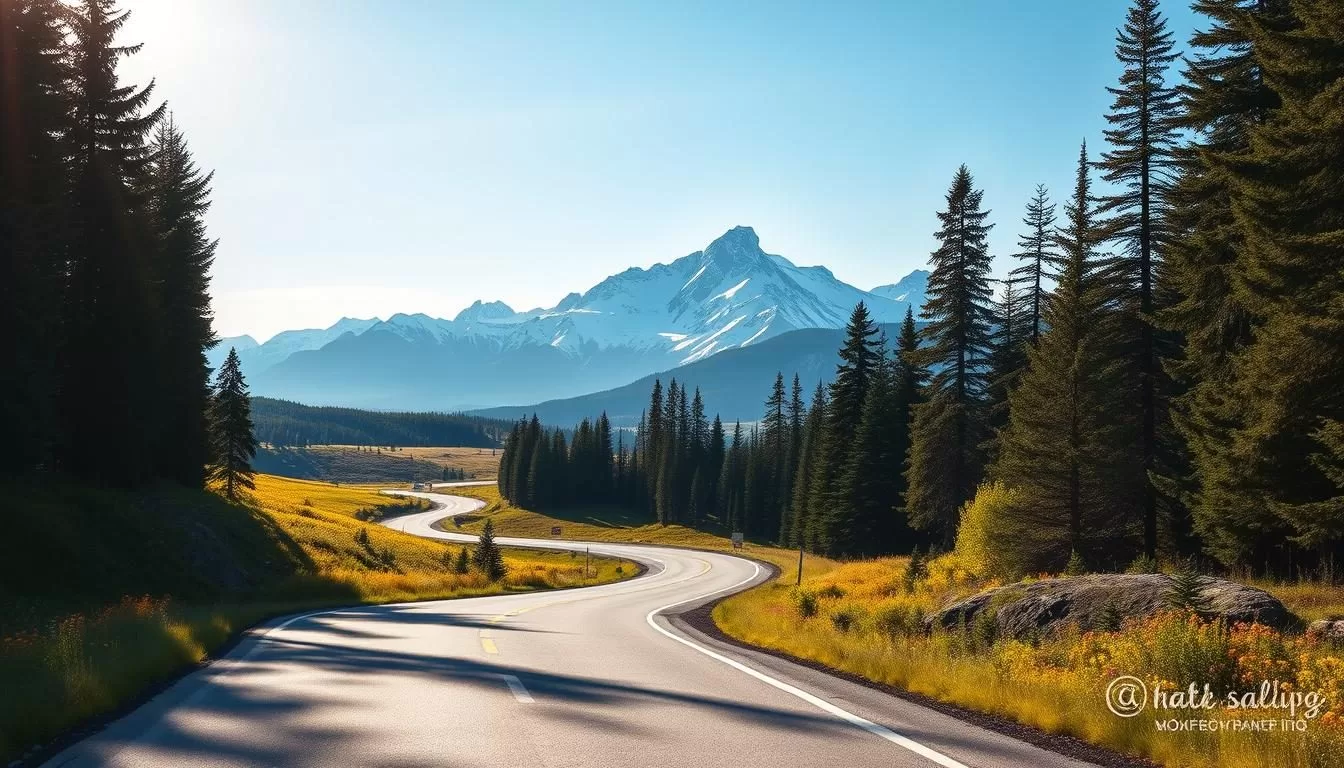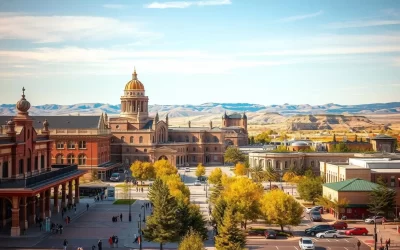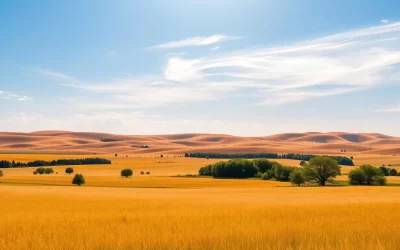As you travel along the Trans-Canada Highway through Saskatchewan, you might think you’re just passing through a vast prairie province. But, there’s more to this place than meets the eye.
Venture beyond the straight stretch of road, and you’ll uncover charming small towns, scenic parks, and fascinating historic sites that make Saskatchewan a treasure trove of attractions.
This guide will help you discover the must-see stops and hidden gems that can turn a simple drive into a memorable trip. With practical information for planning your stops, you’ll be able to explore the province’s diverse attractions, from history to natural wonders, making your journey truly unforgettable.
Discovering Saskatchewan’s Hidden Gems Along the Trans-Canada
Beyond the rush of traveling the Trans-Canada Highway lies Saskatchewan, a province rich in hidden gems just waiting to be discovered. While many travelers zip through on their way to other destinations, those who take the time to explore are rewarded with unforgettable experiences.
Saskatchewan is often overlooked by travelers who simply pass through on the Trans-Canada Highway. However, the province has numerous hidden gems that require just a short detour from the main highway. These attractions range from quirky roadside monuments to natural wonders and historic sites, offering a diverse array of experiences for visitors.
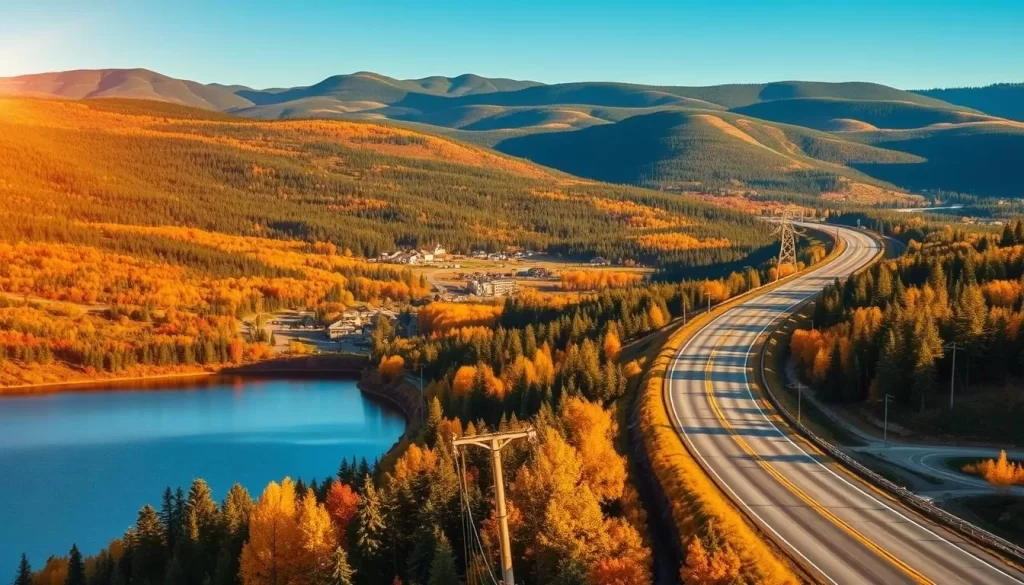
By making a few strategic stops along the way, you can experience a more authentic side of Saskatchewan’s culture and landscape. Many of these lesser-known places can be visited with just a small time investment, making them perfect for road trip stops. Exploring these hidden gems not only enriches your travel experience but also supports local communities and businesses along the Trans-Canada corridor.
Discovering these gems will give you unique stories and experiences that most tourists miss. The wide-open spaces and smaller crowds in Saskatchewan make it an ideal place to explore at your own pace, allowing for a more personal connection to the history and beauty of the province. So, why not take a detour and visit some of these incredible sites along Trans-Canada?
Planning Your Saskatchewan Road Trip Adventure
As you prepare for your journey along the Trans-Canada Highway, it’s essential to plan your Saskatchewan road trip adventure carefully. A well-planned trip ensures that you make the most of your time and enjoy the diverse attractions Saskatchewan has to offer.
Best Time to Visit Saskatchewan
Saskatchewan is a year-round destination, but the best time to visit depends on your preferences. Summer is ideal for outdoor activities like hiking and camping, with warm temperatures and long days. Autumn brings a picturesque landscape with changing foliage, making it perfect for photography.
- Summer: Warm weather, ideal for outdoor activities
- Autumn: Foliage, photography
- Winter: Snow sports
- Spring: Birdwatching, newborn wildlife
Regardless of when you visit, be prepared for variable weather conditions.
Essential Road Trip Tips for the Trans-Canada Highway
When driving the Trans-Canada Highway through Saskatchewan, several factors can enhance your road trip experience. First, ensure your vehicle is in good condition, with proper tire pressure, oil, and brakes. Be aware of the distances between services and plan your fuel stops accordingly.
![]()
It’s also crucial to pack essentials like snacks, water, and a first-aid kit. Consider downloading apps that provide historical information about the areas you pass through. Additionally, be mindful of wildlife, especially during dawn and dusk when animals are more active.
- Check your vehicle’s condition before embarking
- Plan your fuel stops
- Pack essential items like snacks and a first-aid kit
- Download historical information apps
- Be aware of wildlife on the road
Moose Jaw: Saskatchewan’s Historic Gem
Moose Jaw, a city steeped in history and charm, awaits your arrival on your Trans-Canada Highway adventure. As you explore this vibrant city, you’ll discover a blend of historical landmarks and modern attractions that make it a must-visit destination.

Mac the Moose: The World’s Largest Moose Statue
One of Moose Jaw’s most iconic attractions is Mac the Moose, the world’s largest moose statue. Standing tall, Mac is a beloved landmark that symbolizes the city’s connection to nature and its rich wildlife heritage. Visitors of all ages are drawn to this giant moose, making it a great spot for family photos and memorable moments.
Tunnels of Moose Jaw: Underground History
The Tunnels of Moose Jaw offer a unique glimpse into the city’s underground history. This attraction features two immersive theatrical tours: the Chicago Connection and the Passage to Fortune. As you explore the tunnels, you’ll be transported back in time to an era of prohibition and bootlegging, with stories of Al Capone’s alleged involvement adding to the intrigue.
During your tour, you’ll experience the history of the tunnels and their use during the prohibition era, brought to life through engaging storytelling and interactive experiences. The tours are available year-round, making the Tunnels of Moose Jaw a perfect stop at any time during your visit.
As you delve into Moose Jaw’s history, you’ll appreciate how the city’s past is woven into its present, making it a fascinating place to explore. Whether you’re interested in history, architecture, or simply enjoying the local culture, Moose Jaw has something to offer.
Natural Wonders Near Moose Jaw
The region surrounding Moose Jaw is home to a diverse array of attractions that showcase the best of Saskatchewan’s natural beauty and rich history. Visitors can explore a mix of natural wonders and historical sites, making it an ideal area for those looking to experience the best of what Saskatchewan has to offer.
Buffalo Pound Provincial Park: Wildlife and Recreation
Located near Moose Jaw, Buffalo Pound Provincial Park is a haven for wildlife enthusiasts and those seeking outdoor recreation. The park is situated around a large lake, offering opportunities for boating, fishing, and other water activities. It’s also a great spot for observing local wildlife, including deer and various bird species.
Wildlife viewing is a major attraction, with the park’s diverse habitats supporting a wide range of species. Visitors can enjoy hiking and biking trails that wind through the park’s scenic landscapes.
Claybank Brick Plant National Historic Site
The Claybank Brick Plant National Historic Site is a fascinating piece of Saskatchewan’s industrial heritage. Once a thriving brick manufacturing plant, visitors can take a guided tour of the buildings and learn about the brick-making process using original equipment from the early 20th century.
The site operated from 1914 to 1989 and played a significant role in Saskatchewan’s history, producing bricks that were used in many significant buildings across Canada. The well-preserved buildings and machinery offer a glimpse into the past, highlighting the importance of the brick plant in the region’s industrial history.
Located 50 km off Highway 1, the site is accessible by taking Highway 39 southeast just before entering Moose Jaw, then continuing on Highway 339 directly south to the historic site. The Claybank Brick Plant is typically open from May to September, with special events held throughout the season.
Chaplin Nature Centre: A Birdwatcher’s Paradise

Located in Saskatchewan, the Chaplin Nature Centre is renowned for its incredible birdwatching opportunities and distinctive saline lake ecosystem. This unique nature reserve is a critical stopover for numerous migratory bird species, making it a paradise for ornithologists and casual observers alike.
Migratory Bird Watching Opportunities
The Chaplin Nature Centre is a haven for bird enthusiasts, with over 30 species of shorebirds documented, including sandpipers and plovers. The centre’s saline lake provides a vital resting ground for these migratory birds, offering abundant food sources. Visitors can witness the spectacular sight of these birds in their natural habitat, making for an unforgettable experience in this remarkable area.
Exploring Chaplin Lake’s Unique Ecosystem
Chaplin Lake’s ecosystem is characterized by its high salt content, similar to seawater, creating a unique prairie environment. This inland saline ecosystem is of significant scientific interest, supporting a diverse range of plant life adapted to the saline conditions. The lake’s surroundings feature interpretive trails that showcase different ecological zones, allowing visitors to explore and appreciate the complexity of this rare habitat type.
The coexistence of salt mining operations with conservation efforts at Chaplin Lake highlights the balance between human activity and environmental preservation. Ongoing research at the lake contributes valuable insights into environmental science, further emphasizing the importance of this unique ecosystem.
Qu’Appelle Valley: Saskatchewan’s Scenic Wonder
Nestled in the heart of Saskatchewan, the Qu’Appelle Valley is a scenic wonder waiting to be explored. As you drive through this picturesque region, you’ll be treated to stunning views of rolling hills, serene lakes, and a rich cultural heritage.
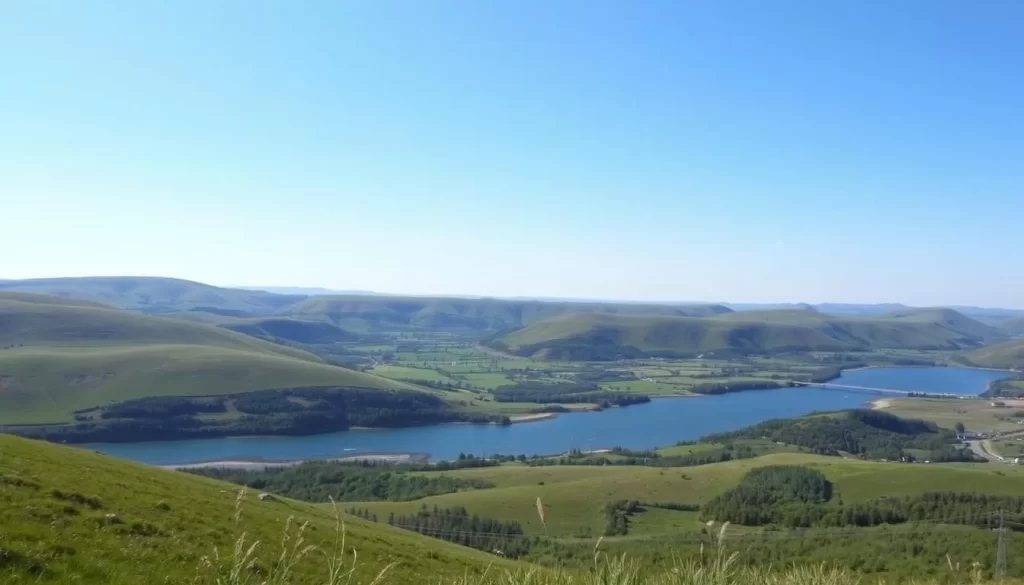
Scenic Drives Through Rolling Hills
The Qu’Appelle Valley offers some of the most scenic drives in Saskatchewan, with winding roads that take you through rolling hills and alongside picturesque lakes. As you explore this beautiful valley, be sure to stop at the many viewpoints and take in the breathtaking views.
The scenic drives in the Qu’Appelle Valley are particularly stunning during the spring and summer months when the hills are green and the wildflowers are in bloom. You can also enjoy the valley’s natural beauty during the fall, when the foliage is ablaze with color.
Lebret: A Hidden Valley Treasure
Lebret, a charming village nestled in the heart of the Qu’Appelle Valley, is a must-visit destination. With its rich history and natural beauty, Lebret offers a unique glimpse into the region’s past. Visit the Sacred Heart Church, a prominent landmark in the village, and explore the Stations of the Cross pilgrimage site on the hillside overlooking the village.
The village is surrounded by beautiful lakes, including Mission Lake and Katepwa Lake, which offer opportunities for boating, fishing, and other water sports. You can also hike up the valley hillsides for panoramic views of the community and the surrounding valley.
As you explore the Qu’Appelle Valley, you’ll discover a region rich in history and natural beauty. From the scenic drives to the charming village of Lebret, this valley is a true Saskatchewan treasure. Be sure to visit the local businesses and dining options, and take in the stunning views of the surrounding lake and valley.
Historic Small Towns Along the Trans-Canada
As you travel along the Trans-Canada Highway in Saskatchewan, you’ll discover charming small towns steeped in history and natural beauty. These towns offer a unique glimpse into the province’s past, with their well-preserved architecture, rich cultural heritage, and warm hospitality.
Wolseley and Its Famous Swinging Bridge
Wolseley, a quaint town along the Trans-Canada Highway, is known for its historic swinging bridge. This iconic bridge, spanning the Qu’Appelle River, is not only a marvel of engineering but also a beloved landmark that attracts visitors from across the region. As you stroll across the bridge, you’ll be treated to picturesque views of the surrounding countryside. Wolseley is a historic town that invites you to explore its charming streets, visit local shops, and experience the warmth of small-town Saskatchewan.
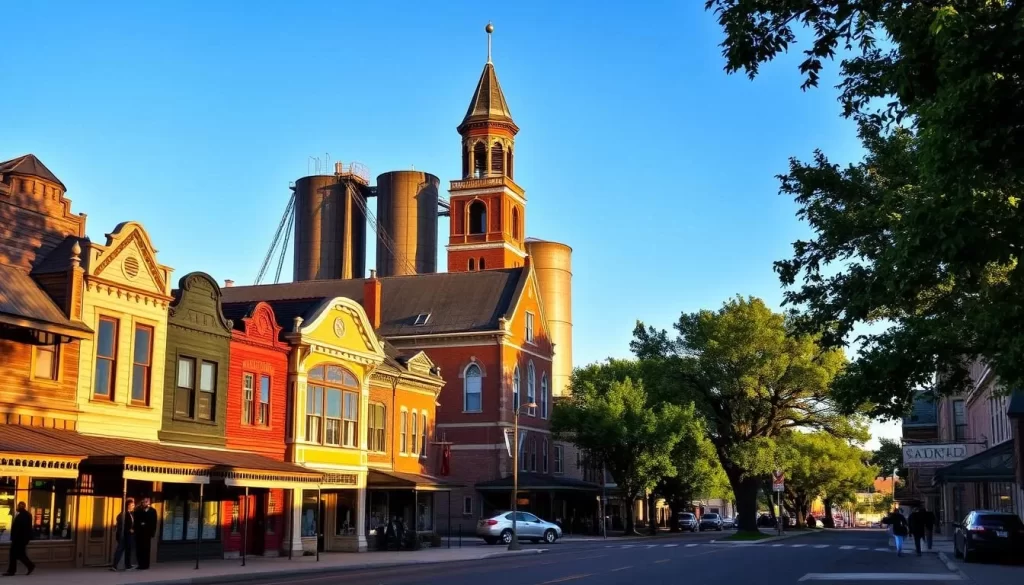
Indian Head: History and Culinary Delights
Indian Head, another historic gem along the Trans-Canada, boasts a rich agricultural heritage. The town is home to one of Canada’s first experimental farms, playing a significant role in the country’s agricultural history. Visitors can explore the town’s historic downtown area, characterized by early 20th-century architecture, and visit the Grand Theatre, one of Canada’s oldest continuously operating movie theaters. Be sure to stop by the Indian Head Bakery & Deli, a local institution renowned for its fresh-baked goods and made-to-order sandwiches, making it a perfect place to refuel during your journey. The town also features the Bell Barn, a unique round stone barn that represents the area’s agricultural heritage. With its blend of history, culture, and culinary delights, Indian Head is a must-visit destination for travelers. Enjoy dining at one of the local restaurants, and take a walking tour of the town’s historic buildings and sites to fully appreciate its charm.
As you explore these historic towns, you’ll uncover the rich tapestry of Saskatchewan’s history and culture, making your Trans-Canada Highway journey all the more memorable.
Culinary Stops Along Saskatchewan’s Trans-Canada Highway
As you travel along Saskatchewan’s Trans-Canada Highway, you’ll discover a rich culinary landscape that reflects the province’s agricultural heritage. The region is known for its farm-to-table produce, traditional Indigenous cuisine, and modern twists on classic dishes.

Learn More
Indian Head Bakery & Deli: A Must-Visit Eatery
One of the must-visit eateries along the Trans-Canada Highway is the Indian Head Bakery & Deli. Located right off Highway 1, this beloved institution is famous for its fresh-baked goods and made-to-order sandwiches. It’s the perfect place to refuel during your journey.
You can’t pass by Indian Head without stopping in to try their signature items, which showcase the best of local cuisine. From savory sandwiches to sweet pastries, every bite is a taste of Saskatchewan’s culinary charm.
Local Prairie Cuisine Worth Trying
Prairie cuisine in Saskatchewan is characterized by its use of fresh, locally sourced ingredients and traditional cooking methods. Some of the local specialties worth trying include perogies, Saskatoon berry pie, and bison burgers. These dishes reflect the province’s agricultural heritage and the cultural influences of its Indigenous communities.
Many restaurants along the Trans-Canada Highway offer these traditional dishes with a modern twist, blending contemporary techniques with classic flavors. Be sure to check out food festivals and events that celebrate Saskatchewan’s culinary traditions, where you can sample a variety of local foods and drinks.
Quirky Roadside Attractions in Saskatchewan
As you travel along the Trans-Canada Highway in Saskatchewan, you’ll discover quirky roadside stops that showcase the province’s unique charm. These attractions not only provide entertainment but also offer insights into the local history and culture.
World’s Largest Red Paperclip in Kipling
Kipling is proud to host the World’s Largest Red Paperclip, a giant replica of a common office supply item turned into a symbol of creativity and community spirit. This unusual attraction is a must-see for travelers looking for something out of the ordinary. The town’s history and its connection to the paperclip are fascinating stories that add depth to this quirky landmark.
The World’s Largest Red Paperclip is more than just a roadside attraction; it’s a testament to the town’s ability to turn an everyday object into a celebrated icon. Visitors can learn about the story behind this giant paperclip and take memorable photos.
Grenfell’s Miniature Grain Elevators
Grenfell is home to a unique collection of miniature grain elevators that pay tribute to Saskatchewan’s agricultural heritage. Grain elevators have played a crucial role in the province’s development, serving as critical infrastructure for the grain industry. The miniature replicas in Grenfell showcase the craftsmanship and attention to detail that reflect the importance of these structures.
| Attraction | Location | Significance |
|---|---|---|
| World’s Largest Red Paperclip | Kipling | Symbol of community creativity |
| Miniature Grain Elevators | Grenfell | Tribute to agricultural history |
| Paterson Grain Elevator | Near Grenfell | Life-size example of grain elevators |
After visiting the miniature grain elevators in Grenfell, travelers can stop by the Paterson Grain Elevator to see a life-size version, providing a comprehensive understanding of these iconic structures. Grenfell’s display is not only a nod to the past but also an educational experience that highlights the significance of grain elevators in Saskatchewan’s history.

Moose Mountain Provincial Park: A Forest Oasis
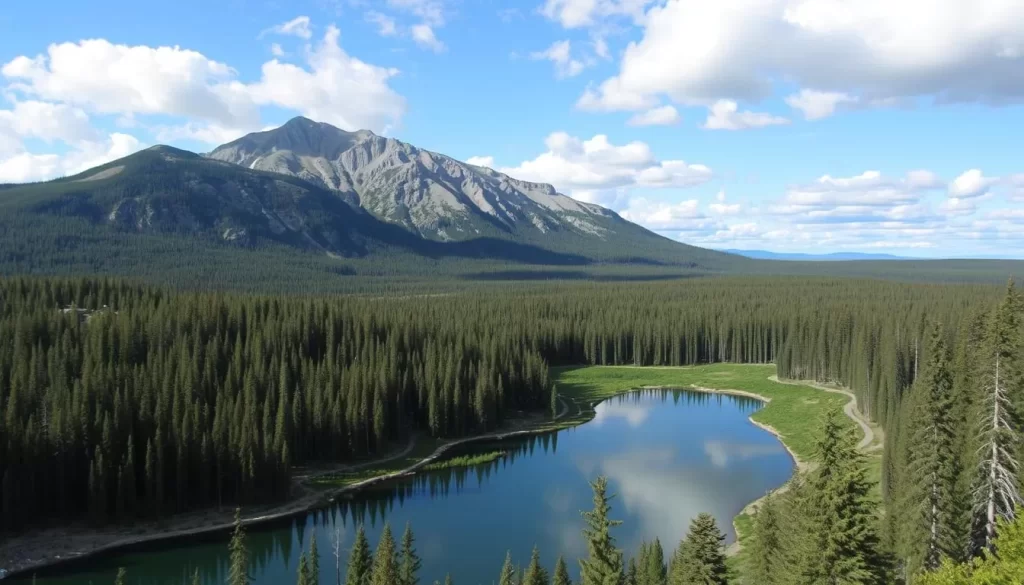
As a forest oasis, Moose Mountain Provincial Park provides a unique blend of natural beauty and outdoor recreation opportunities. The park is characterized by its extensive network of trails that wind through scenic woodlands, lakes, and rolling hills, making it an ideal destination for nature enthusiasts and adventure seekers.
Hiking Trails and Outdoor Activities
Moose Mountain Provincial Park boasts an extensive trail system that caters to hikers of all skill levels. The trails range from easy strolls to more challenging hikes, offering something for everyone. Visitors can explore the park’s natural beauty on foot, taking in the scenic views and diverse ecosystems.
In addition to hiking, the park offers a variety of outdoor activities, including camping, fishing, and wildlife viewing. The park’s lakes and wetlands are home to a wide range of wildlife, making it a perfect spot for nature photography and observation.
Wildlife Viewing Opportunities
The park is renowned for its diverse wildlife, including deer, moose, and a variety of bird species. Visitors can spot these animals in their natural habitats, particularly during the early morning and late evening when they are most active.
The unique ecosystem of Moose Mountain Provincial Park supports a rich variety of wildlife. The park’s forests, grasslands, and wetlands provide habitats for numerous species, making it a haven for wildlife enthusiasts. To ensure responsible wildlife viewing, visitors are encouraged to keep a safe distance and avoid feeding the animals.
Motherwell Homestead National Historic Site
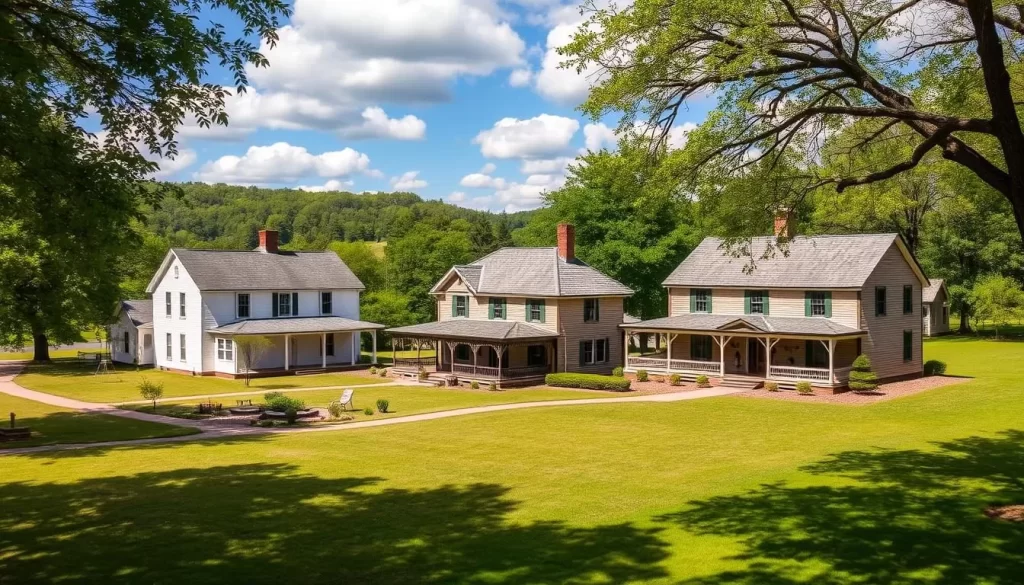
Learn More
Experience the rich agricultural history of Saskatchewan at the Motherwell Homestead National Historic Site. This carefully preserved homestead showcases the life and work of W.R. Motherwell, one of Saskatchewan’s early agricultural pioneers. As you wander through the old homestead and explore the grounds, you’ll gain insight into early settler life through immersive exhibits and live demonstrations.
Exploring Pioneer Life on the Prairies
The Motherwell Homestead offers a unique glimpse into the past, allowing visitors to understand the challenges and triumphs of pioneering life. By taking a tour of the homestead, you’ll discover how W.R. Motherwell contributed to the development of Saskatchewan’s agricultural practices. The homestead’s historic buildings and interactive exhibits provide a tangible connection to the region’s history.
Educational Programs and Demonstrations
The site offers various educational programs designed to engage visitors of all ages. Hands-on demonstrations of historical skills and crafts are a highlight, giving you a chance to learn about traditional farming practices and pioneer life during a specific time in history. Seasonal demonstrations reflect the agricultural calendar, ensuring that the activities are relevant and engaging throughout the time you visit.
Costumed interpreters play a crucial role in bringing history to life, providing context and insights into the daily lives of early settlers. Special workshops are available where you can learn historical skills, further enhancing your understanding of Saskatchewan’s agricultural heritage. These programs are particularly beneficial for school groups and children, offering a unique and interactive learning experience.
Saskatchewan Landing Provincial Park
Saskatchewan Landing Provincial Park is a haven for those looking to explore the great outdoors, with its unique blend of prairie and riverside ecosystems.

Lake Diefenbaker Recreation
Lake Diefenbaker offers a variety of recreational activities, including boating, fishing, and swimming. The lake’s vast waters provide ample opportunities for water sports and relaxation.
The surrounding area is also perfect for picnics and camping, allowing you to immerse yourself in nature and enjoy the serene environment.
Hiking and Nature Exploration
The park features an extensive network of hiking trails that cater to different skill levels, from easy strolls to more challenging hikes.
As you explore the trails, you’ll have the chance to observe the diverse ecosystems, from prairie habitats to riverside environments, and spot local wildlife.
The trails are equipped with interpretive signage, providing insights into the park’s natural and cultural features.
Whether you’re interested in spring wildflowers or the vibrant colors of fall, each season offers a unique experience in this beautiful area.
The Great Sand Hills: Saskatchewan’s Desert
If you’re looking for a unique experience in Canada, the Great Sand Hills in Saskatchewan is the place to visit. Located northwest of Swift Current, this vast desert landscape offers a blend of natural beauty and adventure that’s hard to find elsewhere.

Unique Geological Features
The Great Sand Hills cover over 1,900 square kilometers, making it a significant and fascinating geological feature. The area is characterized by sand dunes, some of which are stabilized by vegetation, while others remain active. This unique landscape was formed over thousands of years through the erosion of sandstone and quartzite rocks.
The sand dunes provide a surreal backdrop for exploration and photography. As you walk through the hills, you’ll notice the varying textures and colors of the sand, influenced by the presence of minerals and moisture levels.
Photography and Exploration Tips
When visiting the Great Sand Hills, timing is crucial for capturing the best photographs. The golden hours, just after sunrise and before sunset, offer soft, warm light that enhances the natural beauty of the dunes. To make the most of your visit, consider bringing a wide-angle lens to capture the expansive views and a polarizing filter to reduce glare.
Safety is also a consideration when exploring this remote area. Ensure you have sufficient water, food, and sun protection. Navigation can be challenging, so it’s advisable to bring a map and compass, and to inform someone of your itinerary. Respecting the environment by leaving no trace is crucial to preserving this unique place for future visitors.
For a photography-focused visit, allocate at least half a day to explore the area thoroughly. The unique landscape offers numerous viewpoints and compositions that can result in captivating photographs. Take your time to experiment with different angles and lighting conditions to capture the essence of the Great Sand Hills.
Cypress Hills Interprovincial Park: Saskatchewan’s Highest Point
As Saskatchewan’s highest point, Cypress Hills Interprovincial Park is a must-visit destination for nature lovers and adventure seekers. This unique provincial park offers a diverse range of landscapes, from lush forests to rolling hills, creating a breathtaking backdrop for your visit.
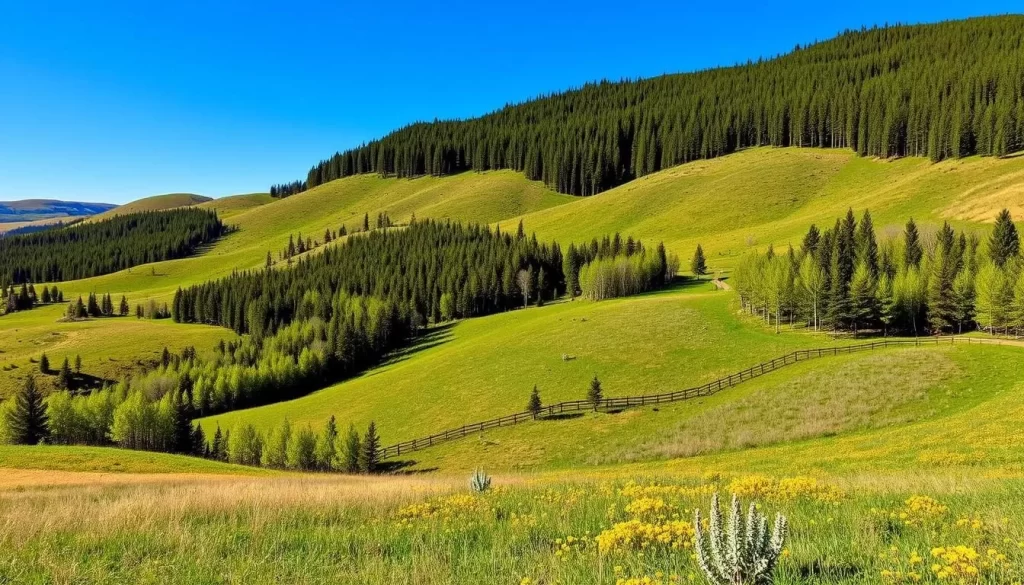
Panoramic Views from Bald Butte
One of the park’s most spectacular attractions is Bald Butte, which offers panoramic views that are simply unforgettable. At an elevation of 1,466 meters, you can gaze out over the rolling hills and valleys, taking in the vast expanse of this natural wonder. It’s the perfect spot to capture some memorable photos or simply soak in the beauty of the surroundings.
The view from Bald Butte is particularly stunning during the fall when the foliage is ablaze with color, making it a popular time to visit. Whether you’re a photographer, nature enthusiast, or just looking for a unique experience, Bald Butte is not to be missed.
Year-Round Activities in Cypress Hills
Cypress Hills Interprovincial Park is a year-round destination, offering a wide range of activities to suit every interest and season. In the summer, enjoy hiking, mountain biking, and water sports on the park’s lakes. As winter sets in, the park transforms into a haven for downhill skiing, cross-country skiing, and snowshoeing.
During the spring, the park comes alive with wildflowers, making it an ideal time for nature walks and wildlife viewing. In the fall, the changing foliage creates a picturesque landscape, perfect for hiking and photography. With so much to offer, Cypress Hills Interprovincial Park is a true gem in Saskatchewan’s outdoor recreation scene.
The park also hosts various events and festivals throughout the year, adding to its appeal as a vibrant and dynamic destination. Whether you’re looking for adventure, relaxation, or simply a chance to connect with nature, Cypress Hills Interprovincial Park has something for everyone.
Trans-Canada Highway, Saskatchewan: Best Things to Do – Top Picks for Different Travelers
Whether you’re traveling with family, seeking nature’s splendor, or delving into history, Saskatchewan’s Trans-Canada Highway has top picks for you. This diverse region offers a wide range of attractions that cater to different interests and age groups.
Family-Friendly Attractions
Saskatchewan’s Trans-Canada Highway is dotted with attractions that are perfect for families. One of the highlights is the Mac the Moose in Moose Jaw, a giant moose statue that’s become an iconic roadside stop. Families can also enjoy the interactive exhibits at the Western Development Museum in Saskatoon, which showcases the region’s history and development.
For a fun-filled day, head to the Great Plains Zoo in Regina, home to a variety of animals and a petting zoo. Another great spot is the Prairie Lily Golf Course in Regina, which offers a challenging golfing experience for adults and juniors alike.
Nature Enthusiast Must-Sees
Nature enthusiasts will find Saskatchewan’s landscapes along the Trans-Canada Highway breathtaking. A must-visit is the Chaplin Nature Centre, renowned for its birdwatching opportunities and unique ecosystem. The center is a haven for migratory birds, making it a perfect spot for nature lovers.
Another highlight is the Moose Mountain Provincial Park, which offers hiking trails, camping sites, and abundant wildlife viewing opportunities. Visitors can also explore the scenic beauty of the Qu’Appelle Valley, known for its rolling hills and picturesque landscapes.
History Buff Recommendations
For those interested in history, Saskatchewan’s Trans-Canada Highway offers numerous historical sites and museums. The Motherwell Homestead National Historic Site is a significant historical attraction, providing insights into pioneer life on the prairies. Visitors can explore the homestead and learn about the early settlers.
History buffs should also visit the Claybank Brick Plant National Historic Site, which tells the story of Saskatchewan’s industrial heritage. The site features remnants of the brick plant and offers a glimpse into the region’s industrial past.
| Attraction | Location | Description |
|---|---|---|
| Mac the Moose | Moose Jaw | Giant moose statue, iconic roadside stop |
| Western Development Museum | Saskatoon | Interactive exhibits showcasing regional history |
| Chaplin Nature Centre | Chaplin | Birdwatching, unique ecosystem |
| Motherwell Homestead | Aberdeen | Pioneer life, historical site |
Conclusion: Making the Most of Your Saskatchewan Trans-Canada Journey
As you travel through Saskatchewan, you’ll find that the province’s charm lies in its unexpected surprises and diverse attractions. The Trans-Canada Highway is more than just a route; it’s a gateway to a myriad of experiences that showcase the best of the Canadian Prairies.
Your journey across this province is filled with opportunities to explore historic gems like Moose Jaw, with its captivating tunnels and the world’s largest moose statue. Nature enthusiasts will delight in the scenic beauty of the Qu’Appelle Valley and the unique ecosystem of Chaplin Lake.
One of the most compelling aspects of traveling through Saskatchewan is the way that time and season can transform your experience. Whether you’re visiting in the spring to witness migratory birds, enjoying the summer festivals, or marveling at the fall foliage, each season offers a unique perspective on the province.
As you plan your trip, consider taking the road less traveled. Even short detours can lead to memorable experiences, from quirky roadside attractions to authentic local cuisine. The warm hospitality of the people you meet along the way adds to the richness of your journey.
Saskatchewan is a province that invites you to slow down and savor the moment. Rather than rushing through, take the time to explore the hidden treasures that line the Trans-Canada Highway. For further planning, visitors can consult local visitor centers or online resources to discover more about the attractions and experiences that await.
In conclusion, your journey along Saskatchewan’s Trans-Canada Highway is not just about the destinations; it’s about the journey itself. With its diverse landscapes, rich history, and welcoming communities, Saskatchewan promises an unforgettable adventure. So, take your time, explore thoroughly, and discover your own Saskatchewan favorites.
The above is subject to change.
Check back often to TRAVEL.COM for the latest travel tips and deals.
